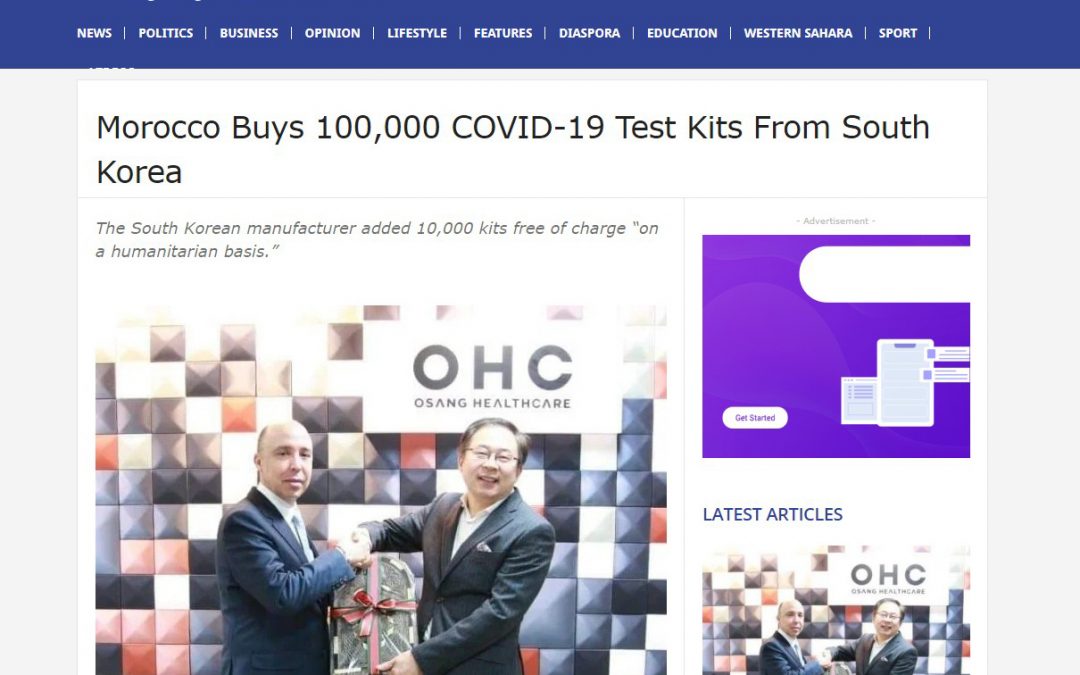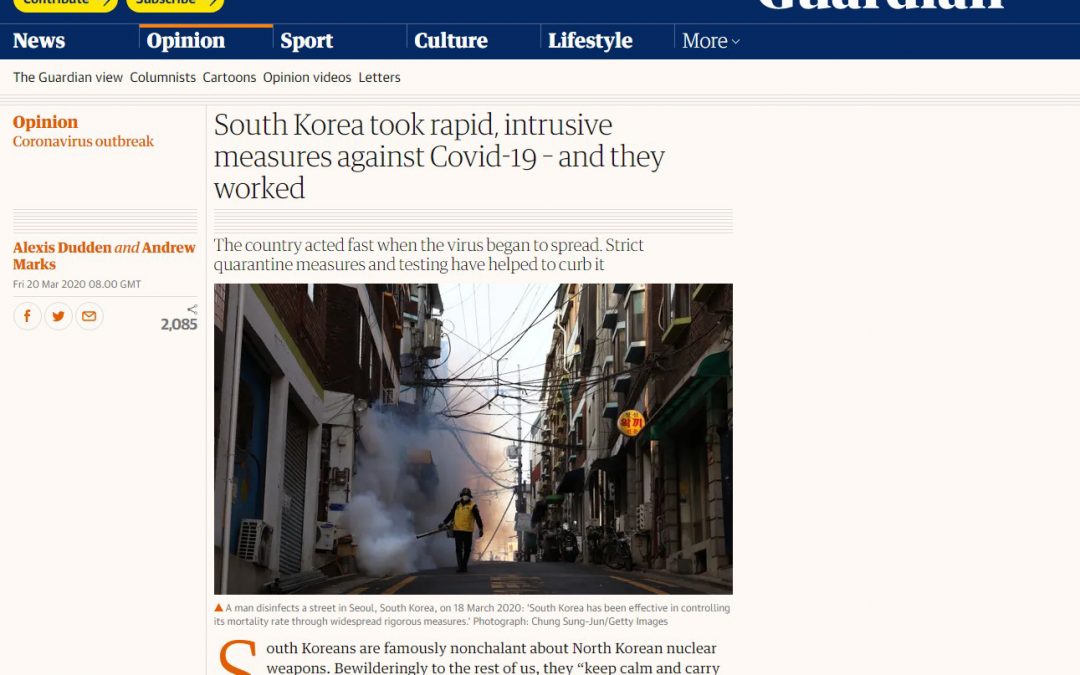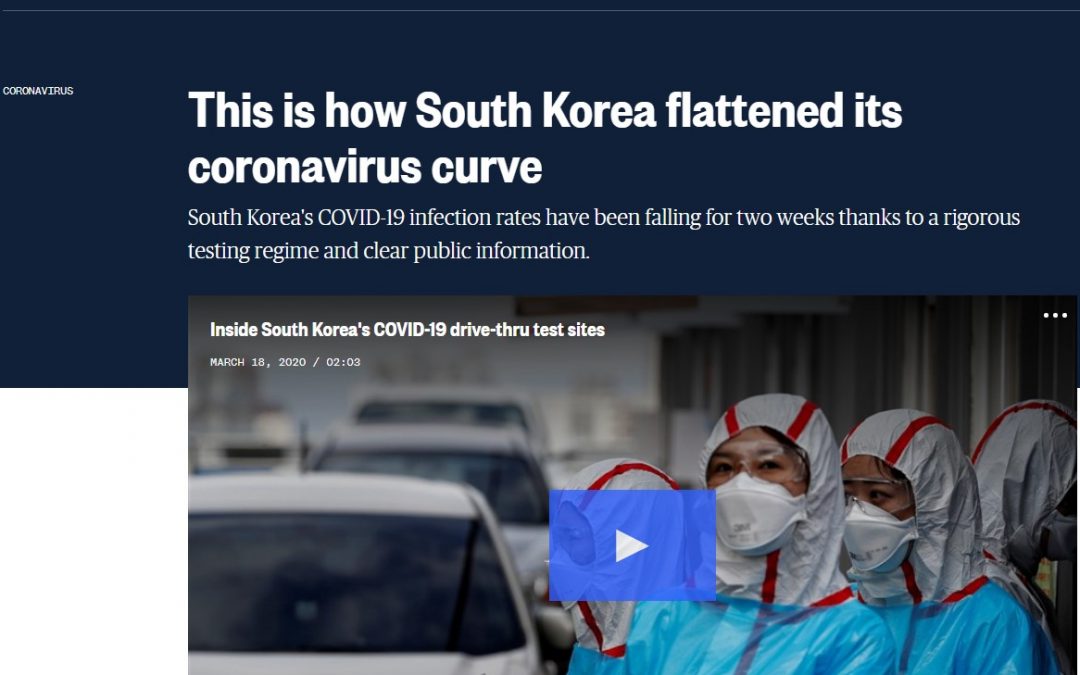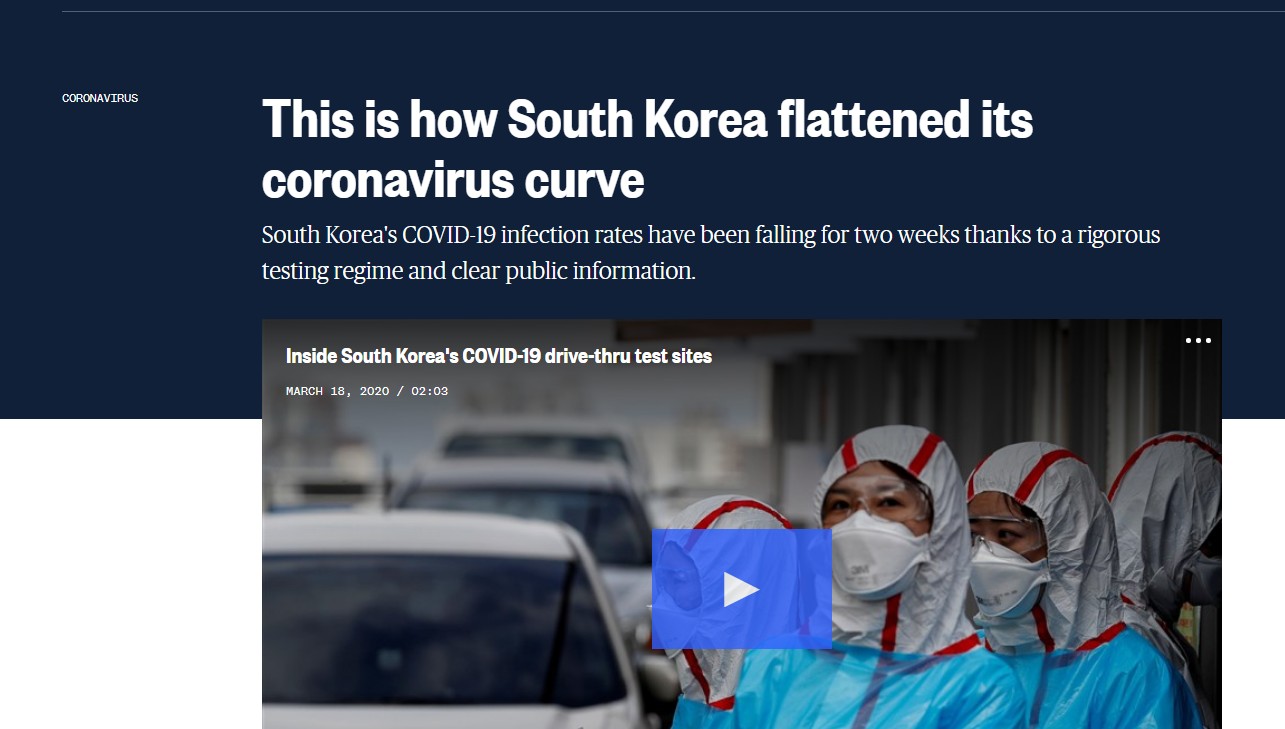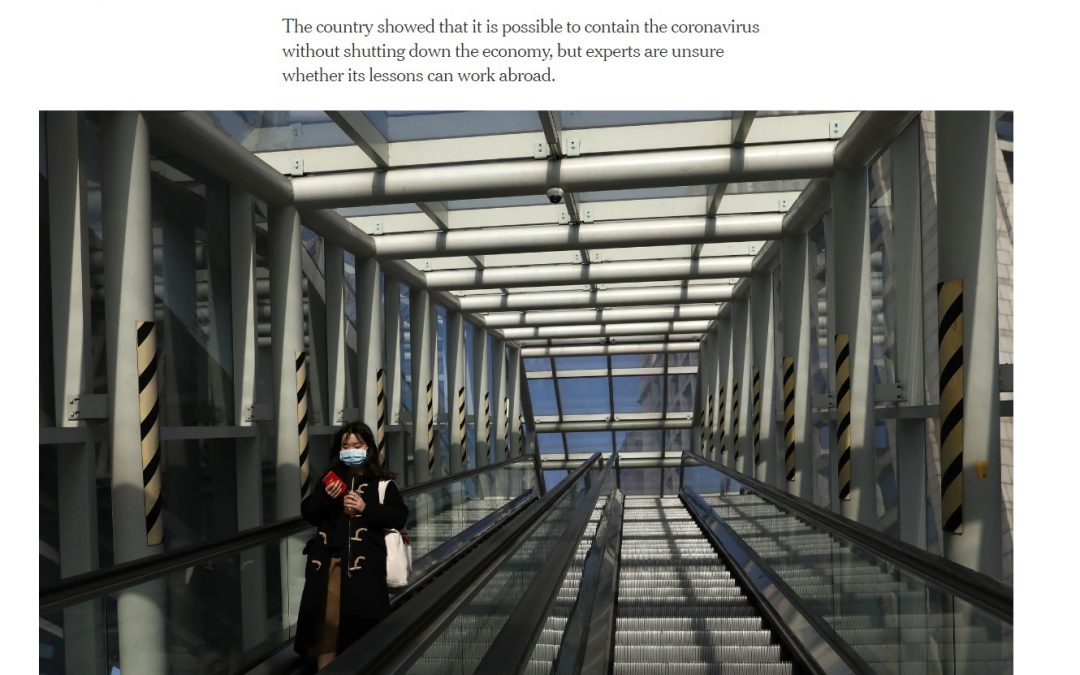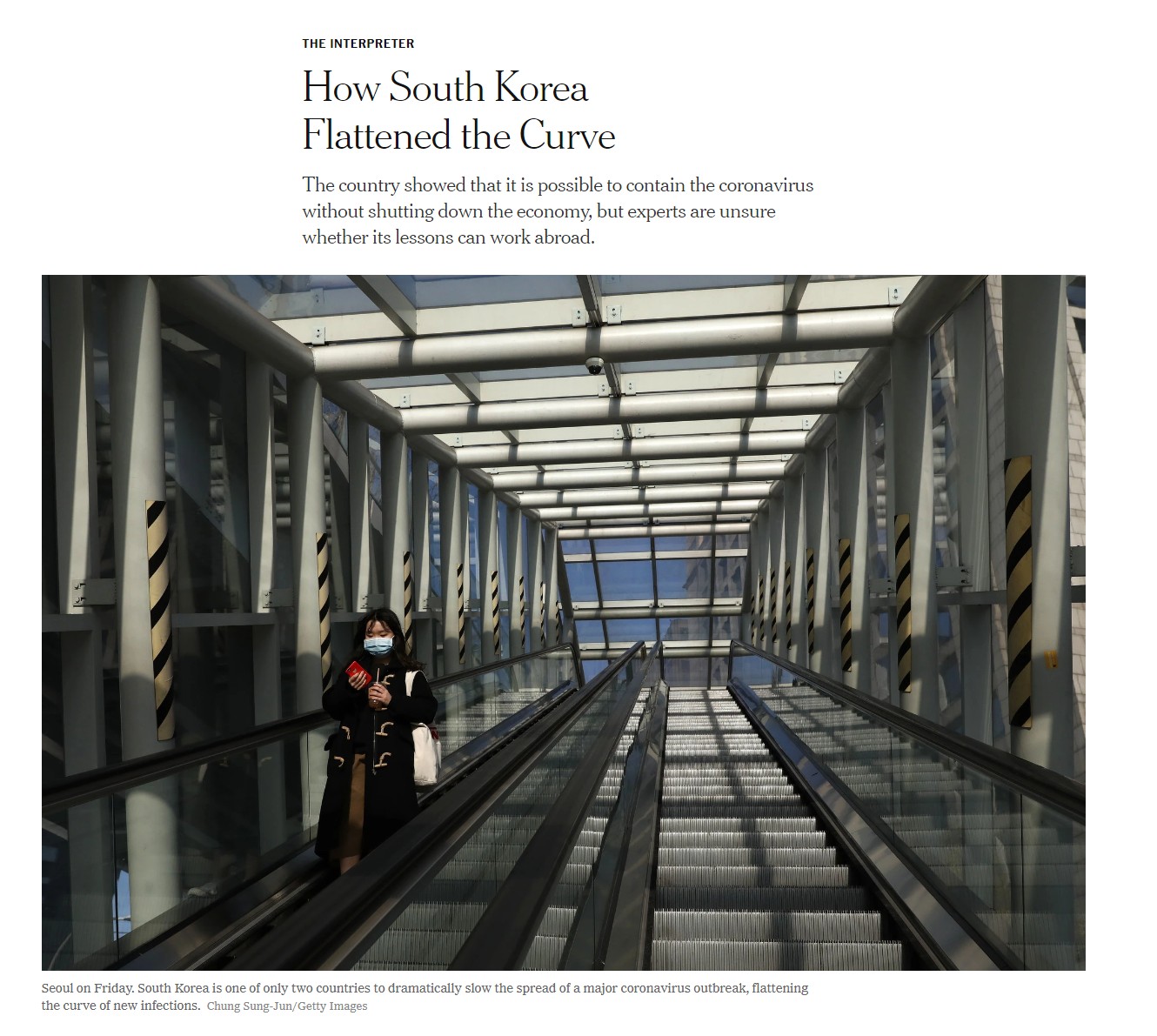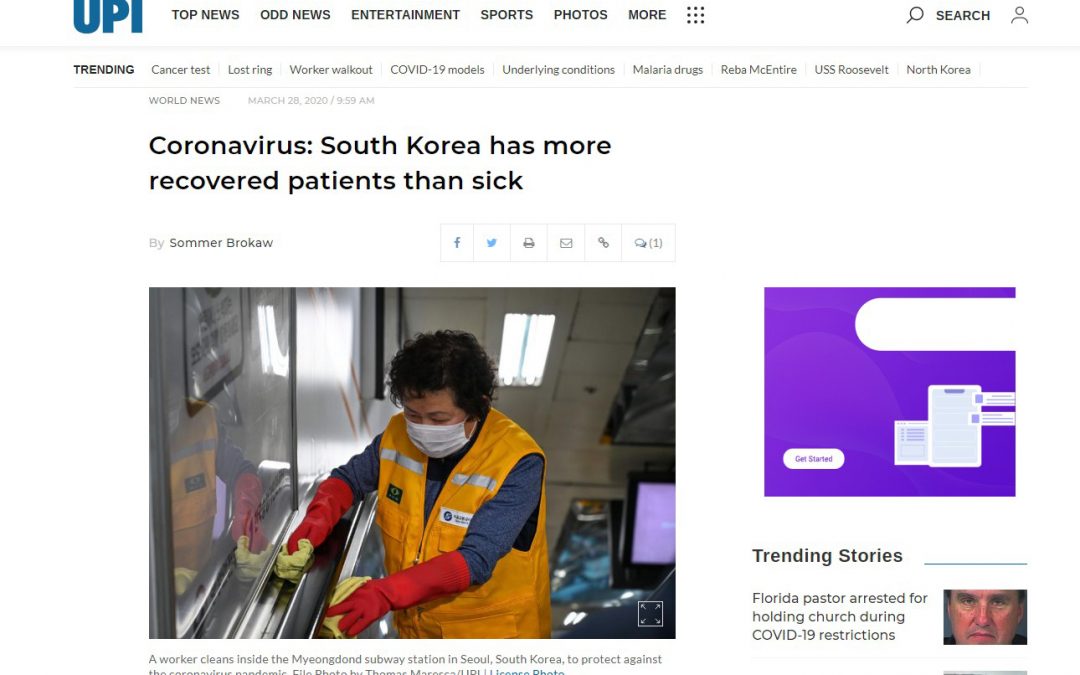
Coronavirus: South Korea has more recovered patients than sick
Coronavirus: South Korea has more recovered patients than sick
| Eyes of World |

outh Korean health officials said Saturday that for the first time since the country’s first confirmed coronavirus case, there have been more recoveries than active cases. According to the Korea Center for Disease Control and Prevention, 4,881 cases are recovered and 4,597 are active.
“We believe this to be the result of selfless efforts made by the public, who worked to maintain disinfectant process while actively participating in social distancing,” said KCDC Deputy Director Kwon Joon Wook during a regular briefing.
The Johns Hopkins University global tracker indicates that South Korea has the 10th highest number of cases in the world with 9,478 cases and 144 deaths. Worldwide, there have been at least 615,000 cases and 28,700 deaths.
Wook stressed that Koreans “must not let complacency take place” as some infections are still causing deaths. He added that people should not break from strict social distancing measures until at least April 5, or else face fines or even a yearlong imprisonment.
Worldwide, the United States has topped the list of the number of cases with 104,860 cases and 1,711 deaths, according to the global tracker Saturday morning. Italy has the second highest number of cases in the world — 86,498 — and has been hardest hit in regard to number of deaths from the coronavirus pandemic. The country has reported 9,134 deaths and recorded its worst 24 hours Friday with 919 deaths from the respiratory illness between Thursday and Friday alone.
China now has the third-highest number of cases, 81,996, and 3,299 deaths. Spain is the second-hardest hit country in Europe with 72,248 cases and 5,690 deaths. It also reported Friday a record one-day figure for fatalities after 769 people died in 24 hours.
Germany has the fifth most cases in the world, according to the global tracker. Still, with 399 deaths in Germany, the death rate has been substantially lower than Italy, Spain and Britain.
Britain has 14,754 cases and 761 deaths. British Prime Minister Boris Johnson became the first head of government Friday to announce he tested positive for COVID-19. So far, he’s experienced mild symptoms.
India, which has 1.3 billion people, the second-highest population in the world next to China, has the world’s largest coronavirus lockdown and thousands of migrant workers are trying to leave major cities after the lockdown left them without jobs or pay.


